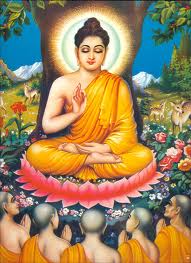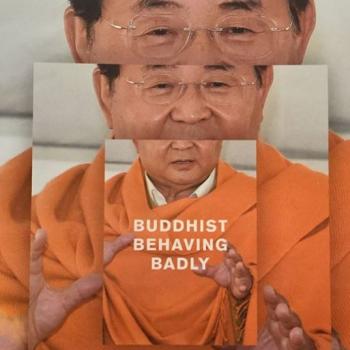A friend and colleague in academia, David Webster, recently posted an interesting article on teaching Buddhism to college students. It’s called, What Buddhism is Not: Presenting Buddhism to Students in the Twentyfirst Century, and it’s short and readable and very much worth a look. He writes of doing a simple web search comparing Buddhism and Islam:
I also ran, recently, a google-news search on UK media mentions on Buddhism—which resulted in stories about meditation, music, more meditation (mindfulness, mostly), spirituality, and various cultural events. An identical search where ‘Buddhism’ was replaced by ‘Islam’ brought results focused on; Jihad, violence, extremism, veils & death threats, and more.
Yes, Buddhism has a very good public image at the moment. As Dave writes, “However, this benign but orientalist and patronising view is clearly only a very partial view.” The goal of any good educator is to get students to see things from multiple perspectives, to realize nothing is all good or all bad.
In concluding the article, he presents a bit of a challenge and request, writing,
“my feeling is that we tend just to ignore this aspect of their prior acquaintance with the idea of Buddhism. What I like to do is to think through how we can initiate our teaching on Buddhism in such a way that it engages with where our students currently are: that it begins in the midst of their preconceptions and then works out from there to unpick some of the notions they arrive with.”
So what do you think? First, do you agree that it’s worthwhile to try to begin by drawing on students’ preconceptions of Buddhism, and then moving on from there? If so, how do you suggest doing that?

I, for one, think it’s a promising idea. When I taught an Intro to Buddhism course a few years back to about 200 undergrads, I started with a big picture of H.H. the Dalai Lama on powerpoint and asked, “how many of you know who this is?” 90+% of the students’ hands went up. He is, after all, “Buddhism’s Teddy Bear.” Then I went to a similar photo of the newly elected Pope Benedict XVI (this was fall 2006) and asked the same question. About 20% of the hands went up.
I’m pretty certain that zero of them (maybe one or two – this was a state school in Montana) would have recognized Ayatollah Ali Khāmene’i, one of the most powerful people in the world. How about Yehuda Krinsky? Apparently he is the most influential rabbi in America. But I digress.
The point of the short exercise was simply to point out that Buddhism is very visible. Pretty much everyone knows who the Dalai Lama is. But after that things get fuzzy. People’s impressions of what Buddhism is vary from “satanic idol-worshiping cult” to “a religion of pure love and kindness.” As the teacher, following my own mentor’s course design, I then stepped back, way back, in time so as to provide the context which led to the beginnings of Buddhism and on through the centuries to our current age of teddy-bear Dalai Lamas.
Buddhism didn’t just appear out of nowhere. Nor did the Dalia Lamas. Tenzin Gyatso, our current Dalai Lama, is #14. Did you know that several of his predecessors (or him in past lives…) died between the ages of 18 and 25 – probably murdered by fellow Tibetans?
Uh oh…
That’s Buddhism. It is, at least in some ways, a living, breathing tradition, filled with people and all of the ugly warts that people tend to have. I’m not a terribly big fan of the people side of it myself – hence the mostly philosophical/textual studies I do – but I have to acknowledge that it is there. The other side, the philosophy, the seemingly timeless concepts of not-self, emptiness, awakening, and the likes are all really fascinating – but in fact, in my own experience they get even more interesting when they’re understood in context. That context should be both the philosophical world in which they arose, but also the human, messy world of historians and anthropologists.
Getting a real grip on ‘What Buddhism is‘ takes all of these perspectives, even though some of them might not fit our particular interests.











